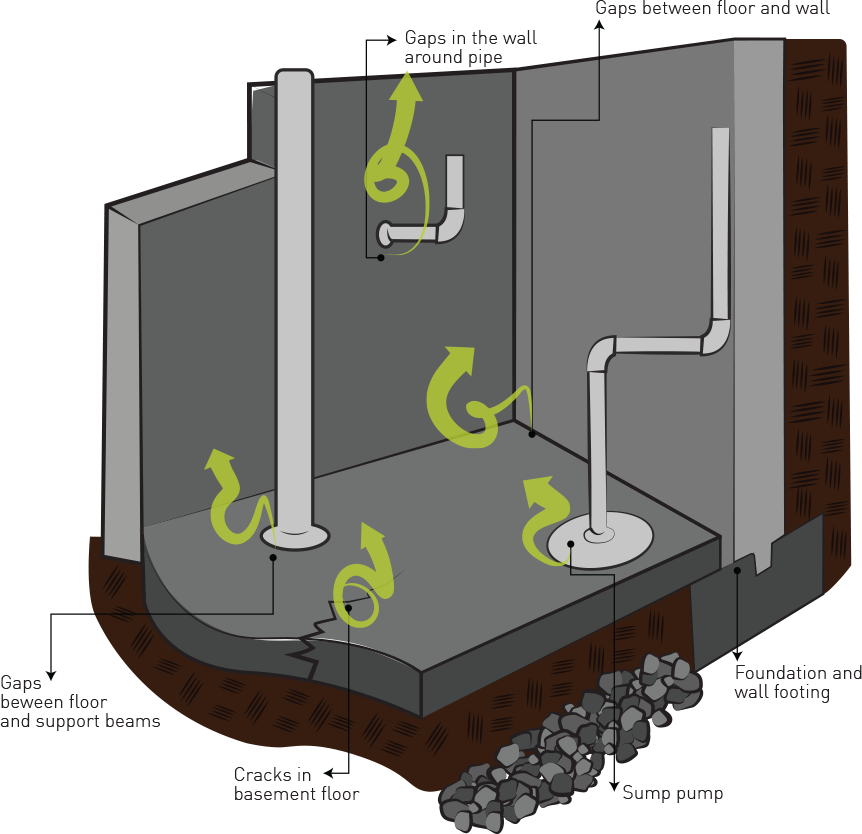Radiation Defense
Is radon really bad for you?
Breathing radon over time increases your risk of lung cancer. Radon is the second leading cause of lung cancer in the United States. Nationally, the EPA estimates that about 21,000 people die each year from radon-related lung cancer. Only smoking causes more lung cancer deaths.
The United States EPA has actually established the radon level of 4.0 picocuries per litre to be the activity degree for radon gas in residences. Significance, do something about it to reduce radon levels that are greater than four picocuries per liter. Remember that radon danger follows a linear contour of the amount vs the time subjected to it plus the additional element that each person might be more or less prone to radon related cancer.
Errors in retrospective exposure assessment might not be dismissed in the searching for at low levels. Other studies into the effects of domestic radon direct exposure have not reported a hormetic impact; consisting of for instance the valued "Iowa Radon Lung Cancer Research Study" of Area et al., which also utilized advanced radon direct exposure dosimetry.

Is radon mitigation really necessary?
When radon gas enters the body, it exposes the lungs to small amounts of radiation. In small quantities, experts say this is harmless. However, in persistent exposures or larger quantities, radon can damage the cells of the lining of the lungs, increasing a person's chance of developing lung cancer.
The first major studies with radon as well as health happened in the context of uranium mining, initially in the Joachimsthal region of Bohemia and after that in the Southwestern USA throughout the early Cold Battle. Because radon is a product of the radioactive degeneration of uranium, underground uranium mines may have high focus of radon. Lots of uranium miners in the 4 Corners area got lung cancer and also other pathologies as an outcome of high degrees of exposure to radon in the mid-1950s. The findings were released in the journal Health Physics in 2008.
- Lung cancer cells danger increases 16% per 2.7 pCi/L increase in radon direct exposure.
- Radon gas is a naturally-occurring byproduct of the contaminated degeneration of Uranium in the dirt.
- Depending on your geographic location, the radon levels of the air you take a breath beyond your home may be as high as 0.75 pCi/L.
- The US EPA has actually placed https://radon1.com/should-you-test-for-radon/ it simply, specifying, "Any kind of radon exposure has some risk of triggering lung cancer.
How do you eliminate radon?
Possible symptoms include shortness of breath (difficulty breathing), a new or worsening cough, pain or tightness in the chest, hoarseness, or trouble swallowing. If you smoke and you know you've been exposed to high levels of radon, it's very important to quit smoking.
The important things to bear in mind is that the threat for lung cancer from radon is arbitrary as well as defies stats. People might be revealed for a life time at very high degrees without obtaining lung cancer, while others may be subjected at modest levels for a year or two and agreement lung cancer. Radon is among minority ecological dangers we have some control over. Many people are afraid that if a radon examination reveals high degrees in a specific house, that the residence is somehow polluted and also cheapened.
How hazardous is radon gas?
What are the symptoms of radon in your home?
If a person has been exposed to radon, 75 percent of the radon progeny in lungs will become "harmless" lead particles after 44 years. When an alpha particle damages a cell to make it cancerous, the onset of lung cancer takes a minimum of 5 years but most often 15 to 25 years, and even longer.
While any degree of radon can have a result, the EPA claims readings listed below 2 pCi/L is considered typical and also just lugs a reasonably little raised danger of lung cancer. It's commonly tough yet possible to minimize radon gas exposure listed below these levels. Radon Act 51 gone by Congress established the all-natural exterior degree of radon gas (0.4 pCi/L) as the target radon level for indoor radon degrees. The United States EPA was charged with establishing sensible guidelines as well as referrals for the country. At or above this level of radon, the EPA advises you takecorrective steps to reduce your exposure to radon gas.

How long does it take for radon to cause cancer?
Fact: You will reduce your risk of lung cancer when you reduce radon levels, even if you've lived with an elevated radon level for a long time. Keep in mind that radon levels below 4 pCi/L still pose some risk and that radon levels can be reduced to 2 pCi/L or below in most homes.